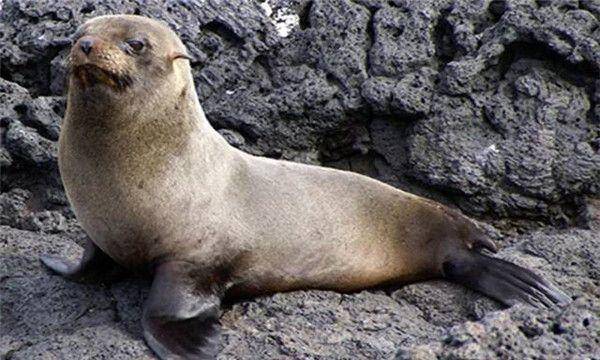Arctocephalus galapagoensis
IUCN
LCBasic Information
Scientific classification
- name:Arctocephalus galapagoensis
- Scientific Name:Arctocephalus galapagoensis,Bear Headed,Galapagos fur seal, Equatorial fur sea lion, Galapagos sea lion, Galapagos sea lion, Galapagos Islands sea lion
- Outline:Carnivora
- Family:S.L.family
Vital signs
- length:1.3-1.5m
- Weight:27-64kg
- lifetime:No verification information
Feature
Short diving time and strong territorial awareness
Distribution and Habitat
It is endemic to the Galapagos Islands, and is found mainly on the western islands of the archipelago, with Isabela being the largest and most numerous. It has also been found on the Upper Foca Island in northern Peru, where the species has moved due to rising sea temperatures.
On the rocky shores of the Galapagos Islands, six to ten Galapagos sea lions may occupy an area of about 100 square meters. This grouping is probably mainly due to the rarity of rocks suitable for the site, which also has the benefit of making the females less vulnerable to predation or harassment. Males during the breeding season occupy an area of 2 million square meters, which includes many females, helping to require larger areas.
Appearance
It is the smallest species in the same genus. Males are 150 cm long and weigh 60-68 kg, females are 130 cm long and weigh 21.5-33 kg, and the weight of the young is about 4 kg at birth. The skull base is 12 cm long. The forehead is flat. The snout is very short. The nose is short, 29 cm. The palate is wide. The teeth are small and single-pointed. The posterior part of the tooth row is separated, and there is a vacant space between the 5th and 6th cheek teeth. The body is covered with coarse hair and dense and thick hair, with white tips, and only the tip of the lip, the tip of the ear and the palm surface of the flippers are exposed. The mane from the top of the head to the shoulders of males is slightly longer, and the back is dark brown to dark gray-brown, and the belly is slightly lighter. The male has a scrotum.
Females and subadults have light gray body hair, brown chest, rusty red below the abdomen, and black skin on the flippers. The cubs have a dark brown coat, and sometimes
Details
Galapagos fur seal (Arctocephalus galapagoensis): Its Greek name, Bear Headed, means "bear head", which is related to its short, pointed muzzle and small, button-shaped nose. This marine mammal is the ancestor of similar terrestrial carnivores.

Galapagos fur seals do not have a fixed living space and mostly live in places with sufficient food. They often gather in small groups, and small groups of one or more than ten are often found at sea. They mainly gather in areas with abundant bait, and their food is mainly bottom-dwelling fish and cephalopods.
Galapagos fur seals generally do not have a fixed habitat except during the breeding season. Males spend 2-3 weeks each month patrolling far away to forage for food, while females and their pups spend relatively more time on land.
The breeding season for Galapagos fur seals lasts from mid-August to mid-November, when slightly cooler temperatures mean less caloric consumption and higher prey capture. The peak birth period occurs in the last week of September or the first week of October. The female will stay with the newborn for 5 to 10 days after the pup is born, after which she alternates between one to two days at sea or three days ashore to feed the pup. The pup will be nursed for two to three years, or even longer, before it fully matures.
Only eight days after giving birth, female Galapagos sea lions will mate with males again, and one male will have between 6 and 16 females in his territory. In rugged terrain, males try to occupy as much territory as possible and defend all females, fighting intruding opponents. It is a very tiring job to defeat the threats of opponents and defend and dispute the territory, so male Galapagos fur seals can often be seen entering the sea water to rest and cool down at noon. Although all female Galapagos sea lions will soon enter mating again after giving birth, only a small number of pups will be born the following year. If they still feed the pups born the previous year, the newborns will often starve, and occasionally the youngest will die. Females mature at 3 to 4 years old, while males take 7 to 10 years to occupy the breeding grounds.
Listed in the 2008 Red List of Endangered Species of the World Conservation Union (IUCN) ver 3.1.
Listed as a Class II protected animal under the CITES Convention on International Trade in Endangered Species.
Protect wild animals and eliminate game.
Maintaining ecological balance is everyone's responsibility!








